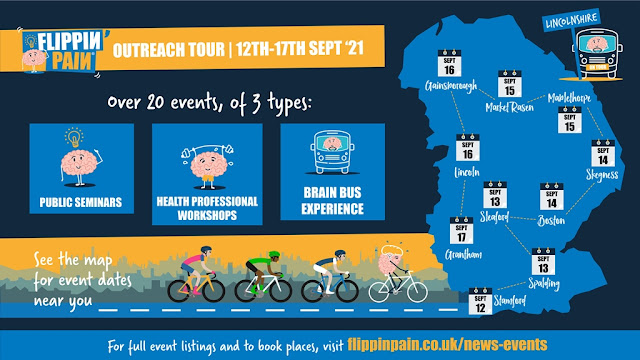"A very powerful and much-needed addition to the library of pain literature"
I was delighted to meet Dr Deepak Ravindran last month as part of the Flippin' Pain community outreach
tour of Lincolnshire. I'd read his excellent book The Pain-Free Mindset: 7 Steps to Taking Control and Overcoming Chronic Pain this summer and thoroughly enjoyed its accessible and digestible mix of pain science and common-sense advice. Dr Ravindran is consultant pain specialist with Royal Berkshire NHS Foundation and has many years experience of helping patients (like me) to cope better with chronic pain.
So, as a patient, I thought I'd offer him the chance to read my patient's-eye book on the subject, Where Does It Hurt? This is what he had to say...
Reading the biography of someone with lived experience of pain is always a honour because it gives us the opportunity to look behind the curtain of someone who looks 'normal' to the rest of the world but is living with an invisible illness that can easily prevent them from living their lives to the full.
Tim Atkinson shows the unique issues of a lived expert in pain management in this book. An accomplished writer, he uses his diagnoses and management of his psoriatic arthritis to chart the difficult and time-consuming journey while observing the unique eccentricities and foibles of primary and secondary medical care with a great sense of humour and liberal references to other major writings.
Tim takes us on a journey through the most common treatments offered for pain management in the UK with a scenic detour through their history and an explanation of how they came to be. I found the chapter on history of opioids, mindfulness and BDSM particularly fascinating. He has also been able to present the newer understanding in a simplified and easy-to-grasp manner and as a clinician, I found seeing how a patient is able to distil and present the new complex science of pain processing very useful.
Ultimately, Tim talks about expectations and understanding the power of taking back control and agency as being key to manage and overcome pain. He has tried a variety of therapies and comes away with that powerful message that the language of pain needs changing. Even more important is the belief and ability to take control and do something about pain rather than being a passive recipient of healthcare. Coming from a patient advocate who lives with pain, that is a very powerful and much needed message to everyone who suffers from chronic pain.
Thank you, Tim, for writing this book. It is a much needed addition to the growing library of pain related literature for patients and healthcare professionals.

Comments
Post a Comment